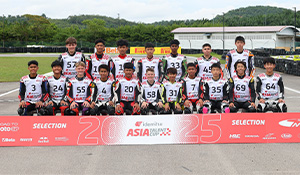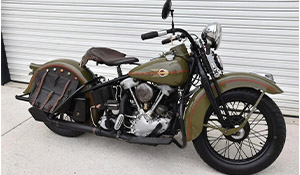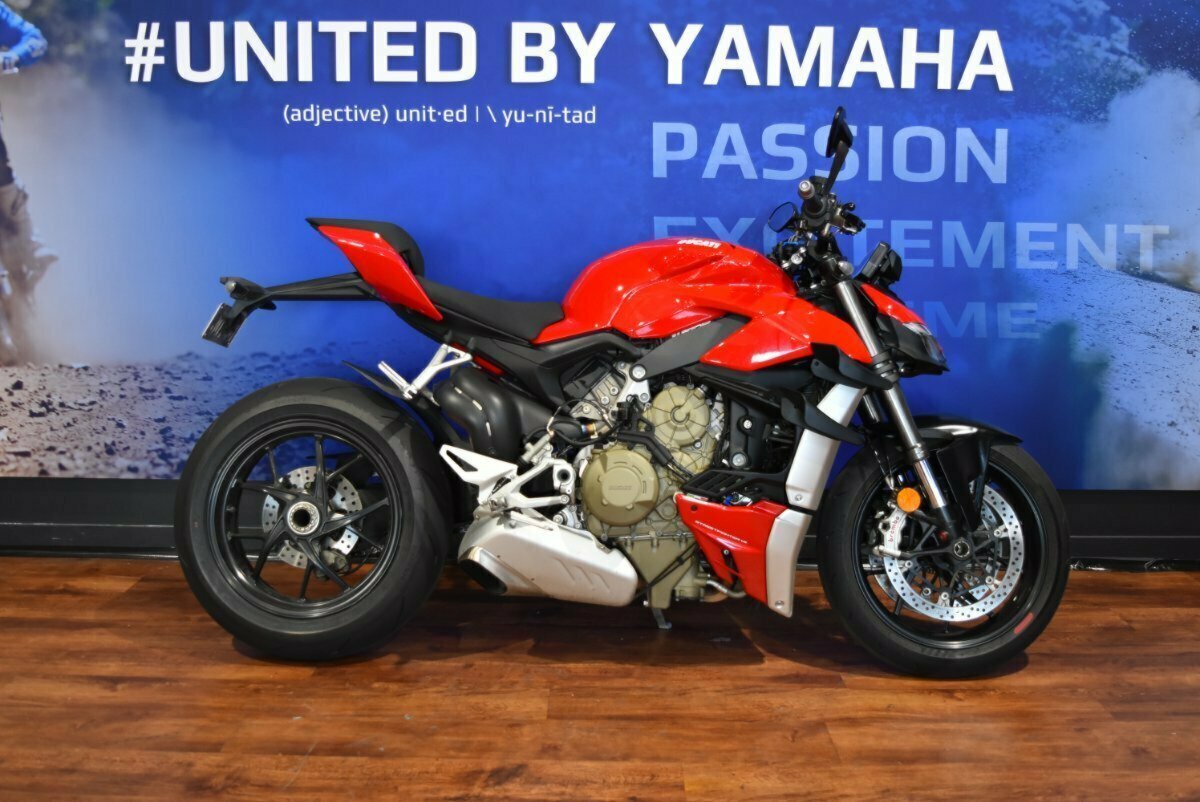Advertisement

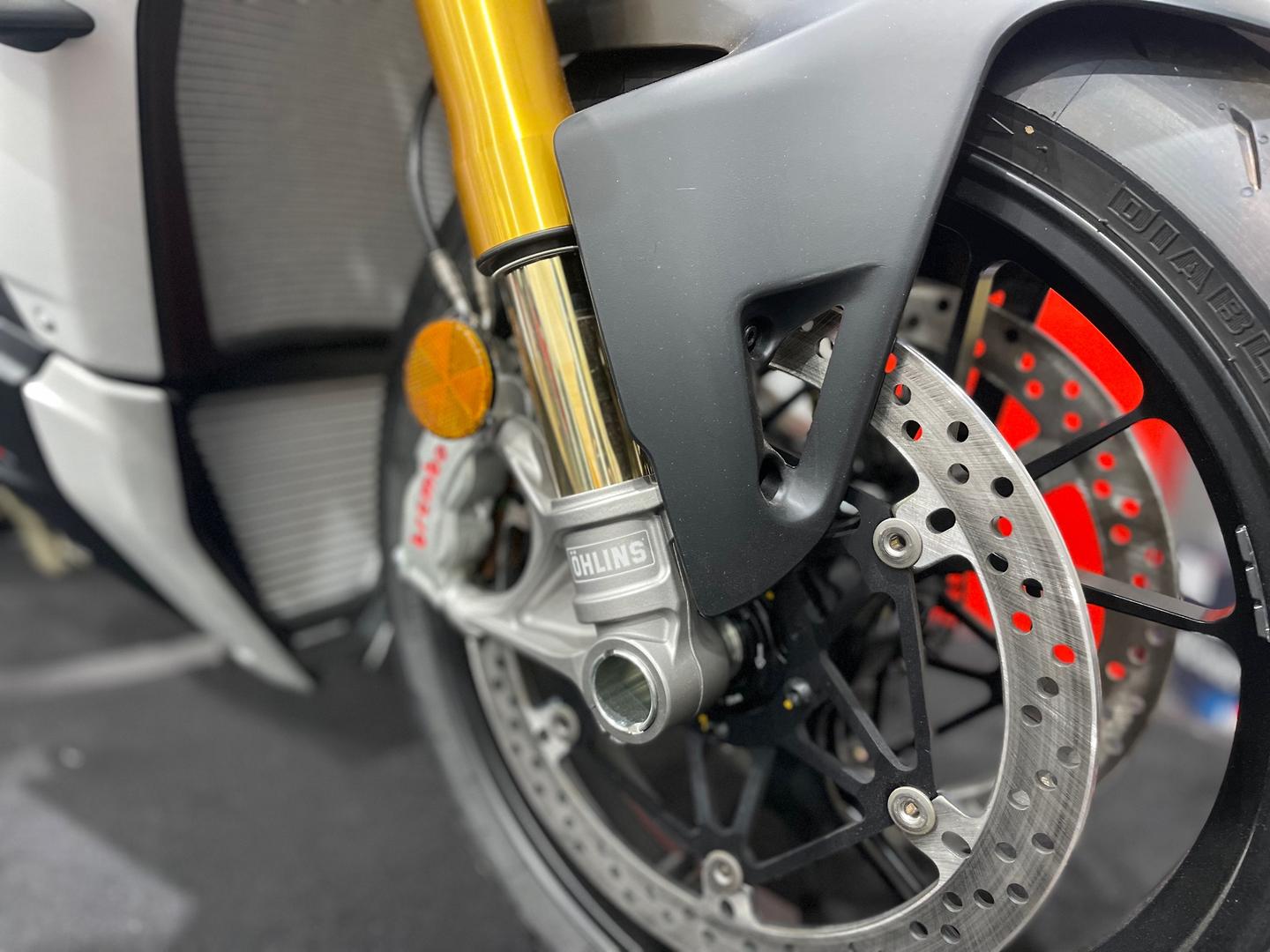

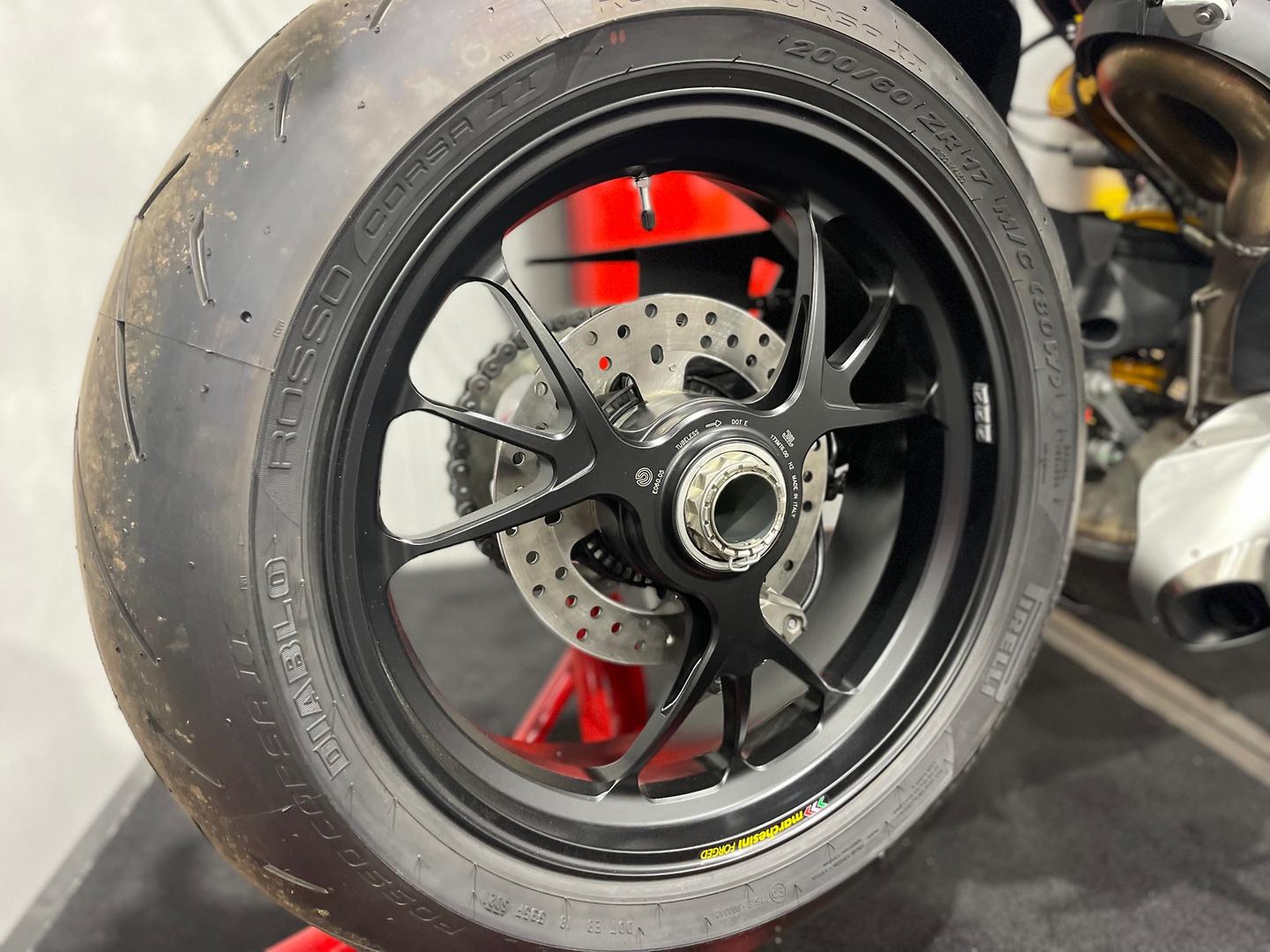
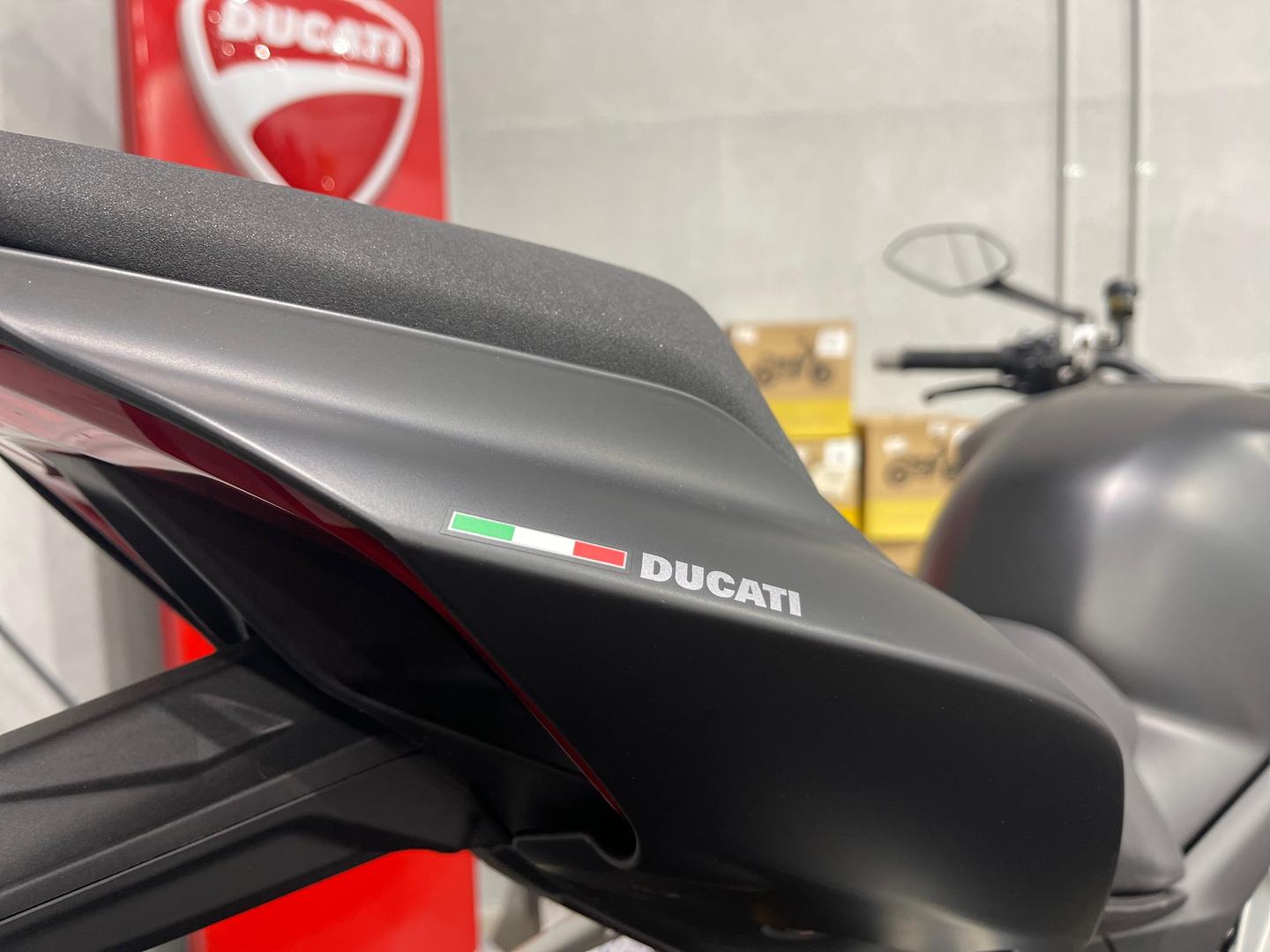

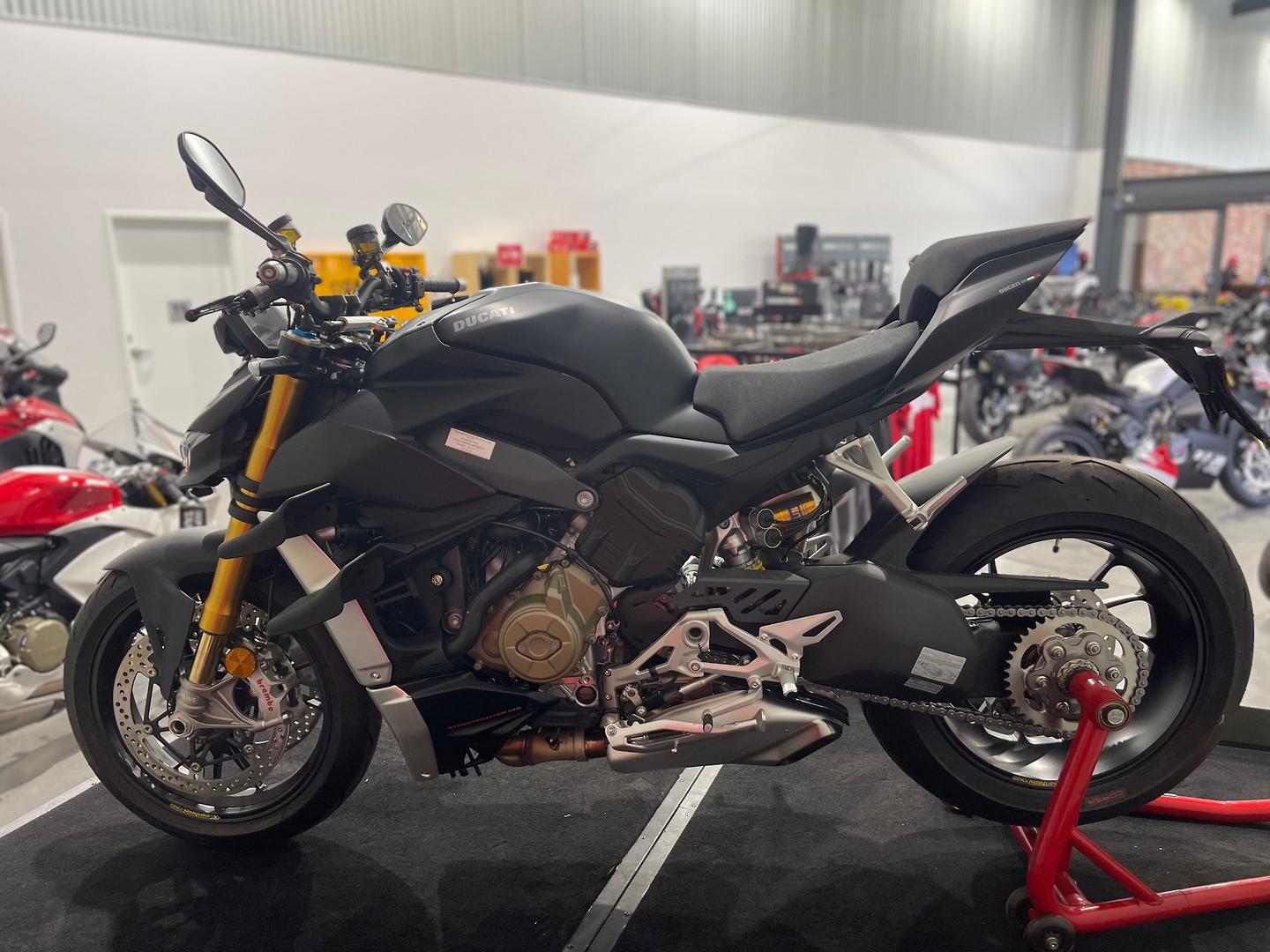
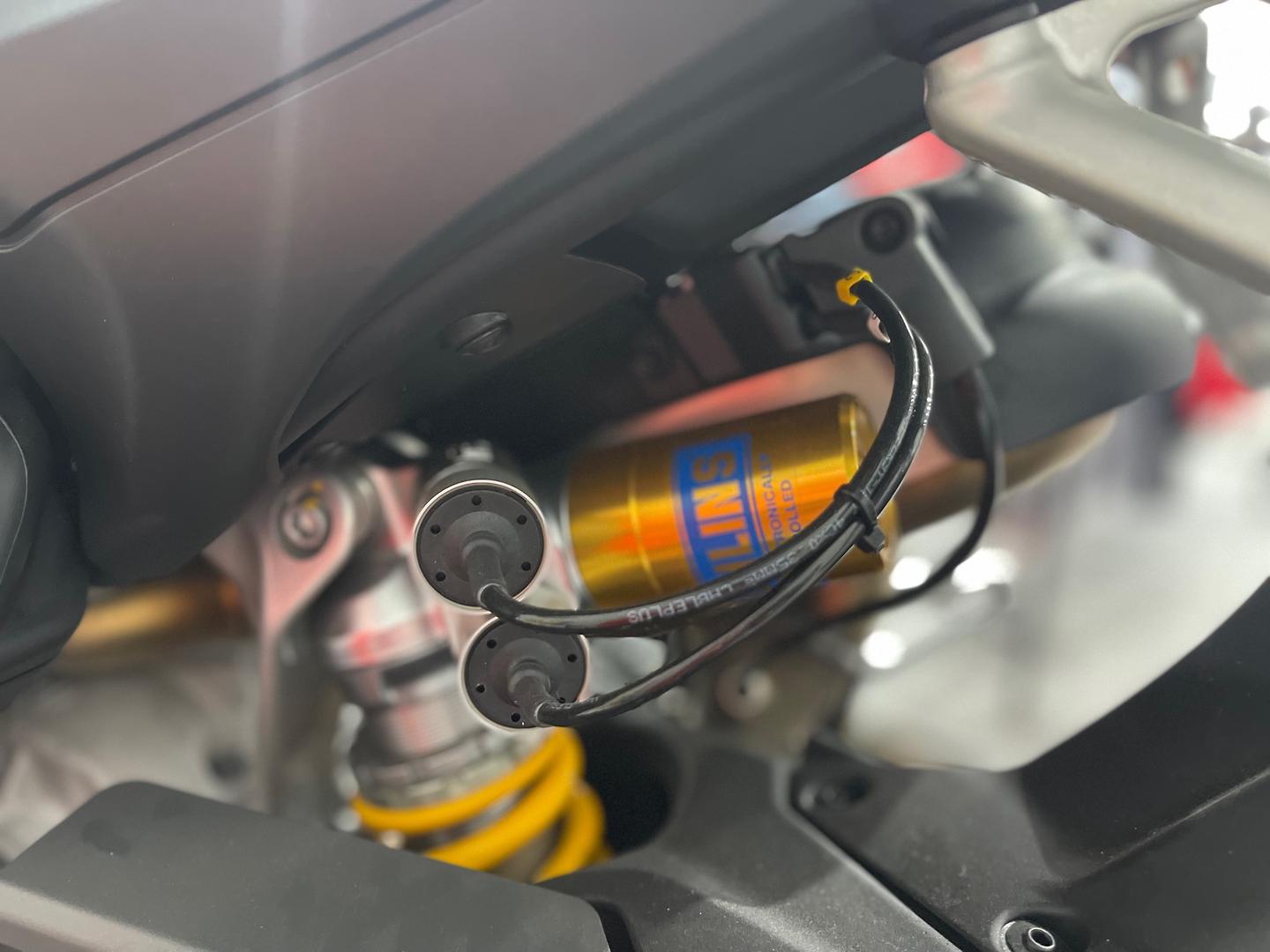

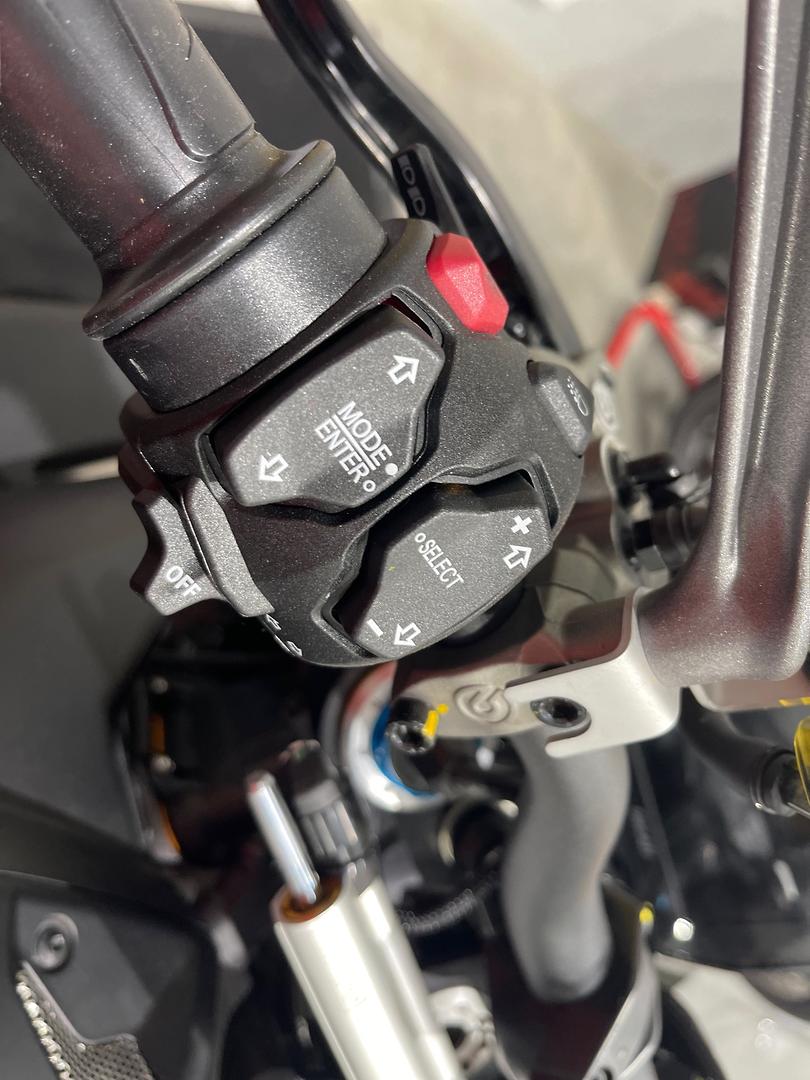
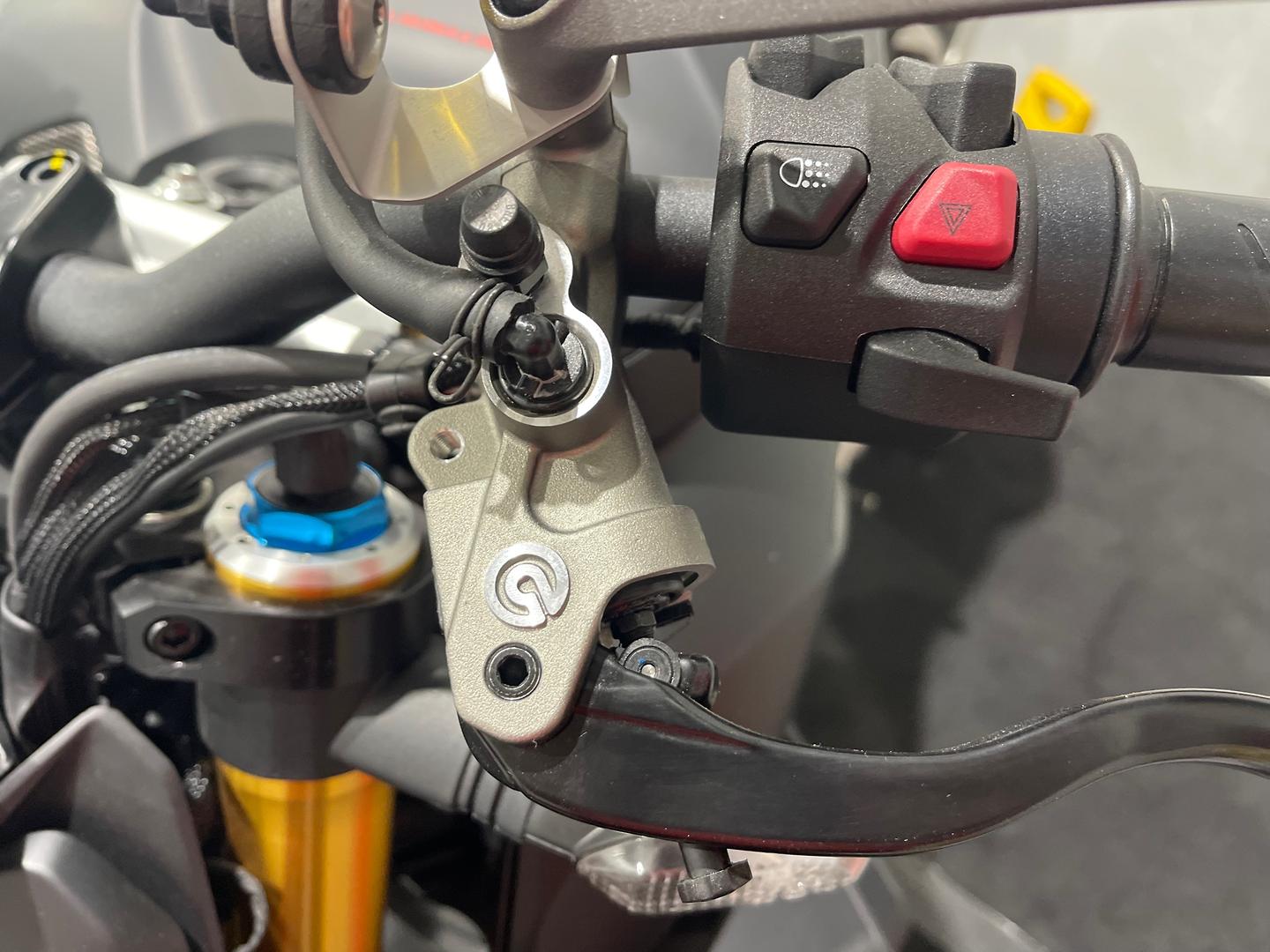
More Images
Seller's Description
2022 Ducati Streetfighter V4S: THE FIGHT FORUMLA.
Introducing the new 2022 Ducati Streetfighter V4S…
The Streetfighter is the result of the "Fight Formula": the Panigale V4 stripped of the fairings, with a high and wide handlebar, 392 lbs on the scale, powered by 1100 cc Desmosedici Stradale delivering 208 hp kept in hand by biplane wings and a complete electronic package.
The modern and technological Ducati naked bike has immediately enjoyed great success among motorcyclists all over the world, also confirmed by the positive feed from the international media.
Ready for the challenge
There are a multitude of engineering and technological aspects conceived for this champion road bike. A balance of distinctive lines, brutal output, state-of-the-art technology and components have been combined in this "Fight Formula" of the Streetfighter V4.
Powerful. Precise. Naked.
An unrivalled, contemporary and technology-packed naked bike, that does nothing to hide its aggressive and exaggerated personality, the character of those who are fearless in accepting new challenges.
The Panigale V4 stripped of its fairings and with high-and-wide handlebar. This is the design concept behind the new Streetfighter V4, a bike that can amplify the emotions of its rider and make them feel like the leader of the pack on every outing on the road. The result is an unrivalled, contemporary, technology-packed naked bike, with a powerful and exciting design that does nothing to hide its performance.
The inspiration: Joker
The minimalist design of the full-LED headlight perfectly captures the essence of the Streetfighter V4 – reminiscent of the Panigale V4’s front end and at the same time evocative of the deranged look of the comic book character who inspired the designer of the Ducati Design Center in creating the new naked from Borgo Panigale: the Joker.
The Ducati signature style is represented by the V-shaped DRL which already characterizes the Panigale V4 and SuperSport.
The compact front light unit is housed in a carefully designed double-layer fairing that accommodates the air inlets for the airbox and for cooling the LED lights, while a rear deflector ensures that the air flow is not aimed straight at the fuel tank.
The headlight is mounted on the 5" TFT instrument panel (the same as the one used on the Panigale V4) featuring a sophisticated front over that stylishly conceals the connections and wiring.
The low forward angled front mirror the lines of the fuel tank to give the Streetfighter V4 the look of a predator awaiting to pounce.
The Front Frame and the Desmosedici Stradale are kept as much in view as possible, partially covered by minimal fairings and covers with sharp lines and sculpted volumes that create an uncluttered, essential look. The F1-derived air extractors stand out from behind the radiator.
They have structural function, connect directly to the frame and incorporate double stacked wings – another MotoGP-derived element – that generate the vertical load necessary to ensure maximum stability at high speeds. The color scheme with the double red area with the black extractor in the center emphasises the dynamic look of the bike when viewed from the side.
Aerodynamics
Fast, agile mixed-road performance demands maximum stability at high speed and when braking, reduced wheel-up during acceleration and minimized electronic control of the suspension set-up: that’s why Ducati Corse specialists have, together with the Ducati Style Centre, developed biplane wings for the Streetfighter V4.
The aerodynamics were developed using CFD (Computational Fluid Dynamics) simulation. The calculation method involved stationary simulation of flow and pressure to achieve increased downforce, especially on the front wheel.
To reduce lateral protrusion as much as possible, the aerodynamics team decided to adopt a ‘biplane’ configuration of limited ‘wingspan’ with upper and lower wings working independently.
Each appendage can be described as a square-plan mono-wing with a winglet on its outer tip. Moreover, the wings have been positioned as close as possible to the front wheel (near the radiator side panels) to maximize the anti wheel-up effect.
These aerodynamic appendages generate 62 lbs of downforce at 168 mph (44 lbs on the front wheel, 18 lbs on the rear). The wings also help draw heat off the engine by increasing water and oil radiator throughflow speeds by 2% and 10% respectively.
Wing-generated downforce attenuates front wheel ‘floating’ at high speed and the tendency to wheel-up. It also improves stability during braking at the turn-in point and through the corner.
The aerodynamics thus instil confidence and limit intervention by electronic controls. This helps the rider keep the throttle open longer and brake later going into the bends, providing significant performance benefits.
Powerful and thrilling
Engine
The arrival of the 2021 Streetfigher V4 keeps the maximum power and torque values.
The Streetfighter V4 delivers 208 HP (153 kW) at 13,000 rpm and a torque of 122.5 Kgm (123 Nm) at 9,500 rpm. These values, obtained thanks to a new calibration and the new exhaust, make the bike even more enjoyable on the roads all curves
The silencer, unchanged from an aesthetic point of view, uses oversized catalysts (+10 mm in length) and a new technology of insertion of noble metals, essential to maximize the ability to convert polluting gases.
The rear bank manifolds have been shortened by 100 mm and reduced in diameter from Ø 42 mm to Ø 38 mm. The new component has allowed the introduction of a more compact rear heat shield integrated in the body of the motorcycle.
Also, the introduction of 4 lambda sensors, one for each cylinder, which allow a more refined control of the quantity of fuel injected.
MotoGP-derived engine
The Desmosedici Stradale was designed around the heart of the MotoGP V4 engine – its cylinder heads.
The fluid dynamics concept of the Desmosedici Stradale is based on the dimensions and geometry used in the Desmosedici GP bike, as is the engine layout: 90° V4 banked rearward 42°. This solution makes the engine extremely compact, allowing the centring of the masses and better integration into the bike.
Racing architecture: road and track
The 81 mm bore is the same as that used on the Desmosedici GP, the maximum size allowed by MotoGP regulations, and is the largest in the Supersport 4-cylinder segment. The 53.5 mm stroke is longer than the GP engine, to provide increased torque when used on the road, and reduce maximum engine rotation speed. The use of the same bore as the Desmosedici GP engine means that all the fluid dynamics, which in fact make up the heart of the engine, are also very similar in the two drive units.
The V4 90° layout makes the engine extremely compact, allowing the centring of the masses and better integration into the bike. In fact, the Desmosedici Stradale has been inserted into the vehicle with the front bank of the cylinders rotated by 42° with respect to the horizontal plane, as on the Ducati engines competing in MotoGP.
This optimizes the distribution of weight, allows for the use of more extensive radiators and makes it possible to shift the swinging arm pivot forwards. Its architecture also generates a natural balancing of first-order forces, without the gain in weight and loss of power of a balance shaft.
V engine
For Ducati, the V4 layout at 90° is the utmost expression of sportiness for a motorcycle engine. It is no coincidence that it is the same solution used in the MotoGP Desmosedici engines. The 90° V layout of the cylinders creates a natural balancing of first-order forces without the need to resort to a balance shaft to eliminate the vibrations that notoriously entail increases in weight and power absorption.
In addition to this primary benefit, which is extremely important for the reliability and mechanical efficiency of an engine that reaches rotation speeds greater than 14,000 rpm, there are others that make the configuration chosen by Ducati the most technically refined.
Compactness
Compared to a classic in-line four-cylinder, the lateral compactness of the V-engine allows greater centralisation of the masses and makes it possible to limit the weight on the front end of the bike. Furthermore, the shorter crankshaft generates a smaller gyroscopic effect.
All these aspects have a positive impact on the bike’s dynamics, helping to make it light and fast when changing directions. The large space available between the V of the cylinders made it possible to position the water pump and have a large volume airbox (12.8 litres) to allow the Desmosedici Stradale to breathe better.
Integration of engine and chassis
The optimal integration of engine and chassis is a fundamental concept behind every Ducati project. That is why the Desmosedici Stradale was developed to be mounted rotated wards by 42°, like the Ducati MotoGP engines, to optimise weight distribution, use more extensive radiators and to shift the swinging arm pivot forwards as much as possible.
The Desmosedici Stradale was also designed to be a structural element of the frame. Connections to the main frame were added to the front of the upper casing and in the head of the rear bank. The engine block also acts as a connection for the rear suspension and swinging arm.
Air intake is entrusted to four oval throttle bodies (52 mm diameter equivalent) connected to fixed 70 mm long intake horns. Each throttle body has two injectors: a sub-butterfly one for low-load use and another above it that comes into play when maximum engine performance is required. The throttle bodies of each cylinder bank are moved by a dedicated electric motor.
Thanks to the full Ride by Wire system, this allows complex electronic control strategies and modulation of engine ‘feel’ according to selected riding mode.
To increase urban riding comfort the rear cylinder bank is deactivated at idle when water temperature exceeds 75°.
Long maintenance intervals
Valve play adjustment (Desmo Service) is required every 14,913 miles ; services are performed every 7,456 miles/12 months.
Chassis and ergonomics
Compared to the Panigale V4, the riding position – with an above-ground height of 845 mm – has been redefined as per the specifications of a naked model. In keeping with streetfighter culture, the semi-handlebars have been replaced by a high, wide bar that, together with a seat with 60 mm of foam thickness and moderated footpeg position, ensures sports-style comfort during inner city rides and the control needed to tackle country roads or racetracks.
While maintaining many of the Panigale’s stylistic features, the tail is supported by a steel subframe and has been redesigned to enhance passenger comfort and give the rider more lengthways space.
Front Frame
The Streetfighter V4 features the Front-Frame – an offshoot of Ducati’s extensive experience in MotoGP – which uses the Desmosedici Stradale engine as a load-bearing member.
Compared to traditional perimeter frames the main lay-out difference is that the engine is used as a structural chassis element. Weighing just 8.8 lbs, the compact Front-Frame is attached directly to the upper crankcase of the front cylinder bank and the cylinder head of the rear bank; the V4 crankcase also provides the rear suspension attachment point and the single-sided swingarm pivot mount.
The key advantage of the Ducati Front-Frame is that it uses the Desmosedici Stradale engine to achieve the desired stiffness: this has resulted in significantly lower main frame length and weight and a better stiffness/weight ratio. Moreover, the struts alongside the engine have been shortened, making bike design more compact, especially in the rider’s seat area.
Completing the chassis is the under-seat Trellis subframe, attached to the Front-Frame at the top and bolted to the head of the rear cylinder bank below.
The rear suspension linkage mechanism is attached to the Desmosedici Stradale engine via a forged aluminium bracket. The linkage reacts to movements imparted by a cast aluminium high-truss swingarm.
Steering geometry features a 24.5° rake and 100 mm trail.
Sophisticated suspension
The Streetfighter V4 mounts 43 mm Showa Big Piston Forks (BPF) to provide full adjustability in spring pre-load and compression and rebound damping.
The fork bodies house chrome sliders with Brembo radial caliper mountings. A Sachs steering damper completes the front-end package. At the rear there is a fully adjustable Sachs shock absorber, one side of which is attached to the Desmosedici Stradale engine via a forged aluminum bracket.
The Streetfighter V4 S, instead, is equipped with an Öhlins NIX-30 fork, an Öhlins TTX36 rear shock absorber and an Öhlins event-based steering damper. On this version suspension and steering damper are controlled by the second-generation Öhlins Smart EC 2.0 system which, among other things, features the new OBTi (Objective Based Tuning Interface).
Marchesini forged aluminum alloy wheels.
Braking system with Brembo Stylema® calipers
Racing tank
MotoGP-derived electronics
ABS Cornering
Ducati Traction Control (DTC) EVO 2
Ducati Slide Control (DSC)
Ducati Wheelie Control (DWC) EVO
Ducati Power Launch (DPL)
Ducati Quick Shift up/down (DQS) EVO 2
Engine Brake Control (EBC) EVO
Ducati Electronic Suspension (DES) EVO
Operational parameters for each of these controls are associated by default with the three Streetfighter V4 Riding Modes. Riders can personalize parameters to suit their riding style or restore Ducati factory settings. DTC, DWC, DSC or EBC control levels can be adjusted quickly via the left switchgear.
Second-generation TFT instrumentation
Introducing the new 2022 Ducati Streetfighter V4S…
The Streetfighter is the result of the "Fight Formula": the Panigale V4 stripped of the fairings, with a high and wide handlebar, 392 lbs on the scale, powered by 1100 cc Desmosedici Stradale delivering 208 hp kept in hand by biplane wings and a complete electronic package.
The modern and technological Ducati naked bike has immediately enjoyed great success among motorcyclists all over the world, also confirmed by the positive feed from the international media.
Ready for the challenge
There are a multitude of engineering and technological aspects conceived for this champion road bike. A balance of distinctive lines, brutal output, state-of-the-art technology and components have been combined in this "Fight Formula" of the Streetfighter V4.
Powerful. Precise. Naked.
An unrivalled, contemporary and technology-packed naked bike, that does nothing to hide its aggressive and exaggerated personality, the character of those who are fearless in accepting new challenges.
The Panigale V4 stripped of its fairings and with high-and-wide handlebar. This is the design concept behind the new Streetfighter V4, a bike that can amplify the emotions of its rider and make them feel like the leader of the pack on every outing on the road. The result is an unrivalled, contemporary, technology-packed naked bike, with a powerful and exciting design that does nothing to hide its performance.
The inspiration: Joker
The minimalist design of the full-LED headlight perfectly captures the essence of the Streetfighter V4 – reminiscent of the Panigale V4’s front end and at the same time evocative of the deranged look of the comic book character who inspired the designer of the Ducati Design Center in creating the new naked from Borgo Panigale: the Joker.
The Ducati signature style is represented by the V-shaped DRL which already characterizes the Panigale V4 and SuperSport.
The compact front light unit is housed in a carefully designed double-layer fairing that accommodates the air inlets for the airbox and for cooling the LED lights, while a rear deflector ensures that the air flow is not aimed straight at the fuel tank.
The headlight is mounted on the 5" TFT instrument panel (the same as the one used on the Panigale V4) featuring a sophisticated front over that stylishly conceals the connections and wiring.
The low forward angled front mirror the lines of the fuel tank to give the Streetfighter V4 the look of a predator awaiting to pounce.
The Front Frame and the Desmosedici Stradale are kept as much in view as possible, partially covered by minimal fairings and covers with sharp lines and sculpted volumes that create an uncluttered, essential look. The F1-derived air extractors stand out from behind the radiator.
They have structural function, connect directly to the frame and incorporate double stacked wings – another MotoGP-derived element – that generate the vertical load necessary to ensure maximum stability at high speeds. The color scheme with the double red area with the black extractor in the center emphasises the dynamic look of the bike when viewed from the side.
Aerodynamics
Fast, agile mixed-road performance demands maximum stability at high speed and when braking, reduced wheel-up during acceleration and minimized electronic control of the suspension set-up: that’s why Ducati Corse specialists have, together with the Ducati Style Centre, developed biplane wings for the Streetfighter V4.
The aerodynamics were developed using CFD (Computational Fluid Dynamics) simulation. The calculation method involved stationary simulation of flow and pressure to achieve increased downforce, especially on the front wheel.
To reduce lateral protrusion as much as possible, the aerodynamics team decided to adopt a ‘biplane’ configuration of limited ‘wingspan’ with upper and lower wings working independently.
Each appendage can be described as a square-plan mono-wing with a winglet on its outer tip. Moreover, the wings have been positioned as close as possible to the front wheel (near the radiator side panels) to maximize the anti wheel-up effect.
These aerodynamic appendages generate 62 lbs of downforce at 168 mph (44 lbs on the front wheel, 18 lbs on the rear). The wings also help draw heat off the engine by increasing water and oil radiator throughflow speeds by 2% and 10% respectively.
Wing-generated downforce attenuates front wheel ‘floating’ at high speed and the tendency to wheel-up. It also improves stability during braking at the turn-in point and through the corner.
The aerodynamics thus instil confidence and limit intervention by electronic controls. This helps the rider keep the throttle open longer and brake later going into the bends, providing significant performance benefits.
Powerful and thrilling
Engine
The arrival of the 2021 Streetfigher V4 keeps the maximum power and torque values.
The Streetfighter V4 delivers 208 HP (153 kW) at 13,000 rpm and a torque of 122.5 Kgm (123 Nm) at 9,500 rpm. These values, obtained thanks to a new calibration and the new exhaust, make the bike even more enjoyable on the roads all curves
The silencer, unchanged from an aesthetic point of view, uses oversized catalysts (+10 mm in length) and a new technology of insertion of noble metals, essential to maximize the ability to convert polluting gases.
The rear bank manifolds have been shortened by 100 mm and reduced in diameter from Ø 42 mm to Ø 38 mm. The new component has allowed the introduction of a more compact rear heat shield integrated in the body of the motorcycle.
Also, the introduction of 4 lambda sensors, one for each cylinder, which allow a more refined control of the quantity of fuel injected.
MotoGP-derived engine
The Desmosedici Stradale was designed around the heart of the MotoGP V4 engine – its cylinder heads.
The fluid dynamics concept of the Desmosedici Stradale is based on the dimensions and geometry used in the Desmosedici GP bike, as is the engine layout: 90° V4 banked rearward 42°. This solution makes the engine extremely compact, allowing the centring of the masses and better integration into the bike.
Racing architecture: road and track
The 81 mm bore is the same as that used on the Desmosedici GP, the maximum size allowed by MotoGP regulations, and is the largest in the Supersport 4-cylinder segment. The 53.5 mm stroke is longer than the GP engine, to provide increased torque when used on the road, and reduce maximum engine rotation speed. The use of the same bore as the Desmosedici GP engine means that all the fluid dynamics, which in fact make up the heart of the engine, are also very similar in the two drive units.
The V4 90° layout makes the engine extremely compact, allowing the centring of the masses and better integration into the bike. In fact, the Desmosedici Stradale has been inserted into the vehicle with the front bank of the cylinders rotated by 42° with respect to the horizontal plane, as on the Ducati engines competing in MotoGP.
This optimizes the distribution of weight, allows for the use of more extensive radiators and makes it possible to shift the swinging arm pivot forwards. Its architecture also generates a natural balancing of first-order forces, without the gain in weight and loss of power of a balance shaft.
V engine
For Ducati, the V4 layout at 90° is the utmost expression of sportiness for a motorcycle engine. It is no coincidence that it is the same solution used in the MotoGP Desmosedici engines. The 90° V layout of the cylinders creates a natural balancing of first-order forces without the need to resort to a balance shaft to eliminate the vibrations that notoriously entail increases in weight and power absorption.
In addition to this primary benefit, which is extremely important for the reliability and mechanical efficiency of an engine that reaches rotation speeds greater than 14,000 rpm, there are others that make the configuration chosen by Ducati the most technically refined.
Compactness
Compared to a classic in-line four-cylinder, the lateral compactness of the V-engine allows greater centralisation of the masses and makes it possible to limit the weight on the front end of the bike. Furthermore, the shorter crankshaft generates a smaller gyroscopic effect.
All these aspects have a positive impact on the bike’s dynamics, helping to make it light and fast when changing directions. The large space available between the V of the cylinders made it possible to position the water pump and have a large volume airbox (12.8 litres) to allow the Desmosedici Stradale to breathe better.
Integration of engine and chassis
The optimal integration of engine and chassis is a fundamental concept behind every Ducati project. That is why the Desmosedici Stradale was developed to be mounted rotated wards by 42°, like the Ducati MotoGP engines, to optimise weight distribution, use more extensive radiators and to shift the swinging arm pivot forwards as much as possible.
The Desmosedici Stradale was also designed to be a structural element of the frame. Connections to the main frame were added to the front of the upper casing and in the head of the rear bank. The engine block also acts as a connection for the rear suspension and swinging arm.
Air intake is entrusted to four oval throttle bodies (52 mm diameter equivalent) connected to fixed 70 mm long intake horns. Each throttle body has two injectors: a sub-butterfly one for low-load use and another above it that comes into play when maximum engine performance is required. The throttle bodies of each cylinder bank are moved by a dedicated electric motor.
Thanks to the full Ride by Wire system, this allows complex electronic control strategies and modulation of engine ‘feel’ according to selected riding mode.
To increase urban riding comfort the rear cylinder bank is deactivated at idle when water temperature exceeds 75°.
Long maintenance intervals
Valve play adjustment (Desmo Service) is required every 14,913 miles ; services are performed every 7,456 miles/12 months.
Chassis and ergonomics
Compared to the Panigale V4, the riding position – with an above-ground height of 845 mm – has been redefined as per the specifications of a naked model. In keeping with streetfighter culture, the semi-handlebars have been replaced by a high, wide bar that, together with a seat with 60 mm of foam thickness and moderated footpeg position, ensures sports-style comfort during inner city rides and the control needed to tackle country roads or racetracks.
While maintaining many of the Panigale’s stylistic features, the tail is supported by a steel subframe and has been redesigned to enhance passenger comfort and give the rider more lengthways space.
Front Frame
The Streetfighter V4 features the Front-Frame – an offshoot of Ducati’s extensive experience in MotoGP – which uses the Desmosedici Stradale engine as a load-bearing member.
Compared to traditional perimeter frames the main lay-out difference is that the engine is used as a structural chassis element. Weighing just 8.8 lbs, the compact Front-Frame is attached directly to the upper crankcase of the front cylinder bank and the cylinder head of the rear bank; the V4 crankcase also provides the rear suspension attachment point and the single-sided swingarm pivot mount.
The key advantage of the Ducati Front-Frame is that it uses the Desmosedici Stradale engine to achieve the desired stiffness: this has resulted in significantly lower main frame length and weight and a better stiffness/weight ratio. Moreover, the struts alongside the engine have been shortened, making bike design more compact, especially in the rider’s seat area.
Completing the chassis is the under-seat Trellis subframe, attached to the Front-Frame at the top and bolted to the head of the rear cylinder bank below.
The rear suspension linkage mechanism is attached to the Desmosedici Stradale engine via a forged aluminium bracket. The linkage reacts to movements imparted by a cast aluminium high-truss swingarm.
Steering geometry features a 24.5° rake and 100 mm trail.
Sophisticated suspension
The Streetfighter V4 mounts 43 mm Showa Big Piston Forks (BPF) to provide full adjustability in spring pre-load and compression and rebound damping.
The fork bodies house chrome sliders with Brembo radial caliper mountings. A Sachs steering damper completes the front-end package. At the rear there is a fully adjustable Sachs shock absorber, one side of which is attached to the Desmosedici Stradale engine via a forged aluminum bracket.
The Streetfighter V4 S, instead, is equipped with an Öhlins NIX-30 fork, an Öhlins TTX36 rear shock absorber and an Öhlins event-based steering damper. On this version suspension and steering damper are controlled by the second-generation Öhlins Smart EC 2.0 system which, among other things, features the new OBTi (Objective Based Tuning Interface).
Marchesini forged aluminum alloy wheels.
Braking system with Brembo Stylema® calipers
Racing tank
MotoGP-derived electronics
ABS Cornering
Ducati Traction Control (DTC) EVO 2
Ducati Slide Control (DSC)
Ducati Wheelie Control (DWC) EVO
Ducati Power Launch (DPL)
Ducati Quick Shift up/down (DQS) EVO 2
Engine Brake Control (EBC) EVO
Ducati Electronic Suspension (DES) EVO
Operational parameters for each of these controls are associated by default with the three Streetfighter V4 Riding Modes. Riders can personalize parameters to suit their riding style or restore Ducati factory settings. DTC, DWC, DSC or EBC control levels can be adjusted quickly via the left switchgear.
Second-generation TFT instrumentation
Advertisement
| Ad Id | JBFD5246618 |
| Make | ducati |
| Model | streetfighter v4 s |
| Price | sold |
| Engine | 1.1l |
| Stock | BN03298 |
Report This Ad
Finance
Advertisement
Advertisement






